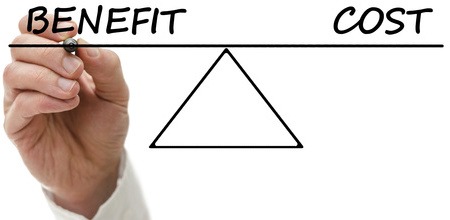
By driver, I mean a motivation for doing something—in this case why it’s a good idea for businesses to manage Health, Safety and Environment (HSE) within their organisation.
If you’ve read my previous articles on HSE, you’ll will be familiar with my references to the terms: Legal, Ethical (or moral), Social and Economic (LESE). These are the four aspects for businesses to consider when assessing their HSE risks and opportunities, and managing them appropriately.
In no particular order below, I outline my views on what each of these drivers are, why they’re important, and why businesses should take note.

This encompasses regulations, statutes, and permit conditions. Despite all living within complex legal frameworks, some of us better than others, for some reason this aspect never made it into the saying: Nothing’s certain in life—except for Death and Taxes.
Many countries have HSE regulations with common principles: safe workplaces and the protection of employees, environmental duty of care, and polluter-pays. Penalties can be severe: fines, site closure, and even imprisonment for “responsible parties” (typically management).
In practice, however, fines that would make the accounting department sit up and sharpen their pencils seem infrequent (or just aren’t reported). Political and economic factors likely have a role in this—as do prescribed “rectification periods” following receipt of a Government Notice. The latter, threatening dire consequences, tends to be sufficient incentive to get companies on the right track.
Fines aren’t the only risk for “bad actors”; authorities can take a closer look at repeat offenders’ operations. The risks? Increased inspections that interrupt operations and inevitably identify more non-compliances, tougher permit renewal conditions, or delayed authority authorisations—such as business expansion projects. All of these represent costs-to-company.
Unlike Death and Taxes, none of the above are certainties. It’s even possible to repair poor relationships with authorities and to become partners. The benefit? They might just respond more positively, for example, to corrective action plans with extended (but justifiable) timeframes.
Whatever local regulatory conditions might prevail, HSE non-compliance represents potential risk to business continuity. Prevention (compliance) is almost certainly better than cure.

This can be paraphrased as “safeguarding people and environment is the right thing to do.” Despite this, motivating investment in HSE projects or programmes on this basis alone can be challenging, especially in “production first” organisations.
To be fair, companies aren’t charities, and HSE isn’t the only function that must justify return on investment or how its actions support the business. However, blanket exclusion of this “soft” driver—as opposed to more tangible economic or legal considerations—leaves an opportunity gap. Worse, it may lead to reputational damage, loss of brand value, and other business risks.
For example, a business with poor ethics might squeeze every salaried minute out of its employees without adequate breaks, or provision of WASH (WAter, Sanitation, Hygiene) facilities. The rational is probably to maximise productivity and reduce overheads. In reality, the company’s unlikely to have particularly happy or productive employees; poor worker morale, presenteeism, elevated staff turnover rates would not be unexpected—all with their own costs-to-company.
A company’s ethics contribute to the internal and external view of its culture and values. It would be counterproductive to maintaining a socially-responsible brand, for example, if a company’s “dirty laundry” about poor workplace equality or workers’ rights emerged.
As consumers, impact investors and, increasingly, companies that are selective about who’s in their supply chain grow in number, those businesses caught short on ethics could find themselves sidestepped by more proactive competitors.

Some HSE risks extend beyond operational boundaries, impacting surrounding communities (society). This can harm a business’s community relations, its reputation, and even its hard-won brand value. It can also lead to economic and legal impacts such as fines.
Despite this, as with ethics the “social” driver can be seen as a “soft” business factor or not even considered. This leaves risk and opportunity gaps in their operations not just limited to social impact.
For example, the overuse of a water source can leave other users—human and environmental—high and dry. Similarly, wastewater discharge into a drinking source or pristine area can lead to public blowback. Frustrated citizens can contact local political leaders with events snowballing from there.
The ultimate social impact for HSE today is climate change. It’s also an area where socially aware impact investors are excluding the most polluting industries from their portfolios. In this case, reduced demand at fixed supply, as any Economics student can tell you, leads to lower share value.
Other impacts might take time to raise public ire to the level where community groups are formed. Excessive noise, light pollution, foul odours, or dust can lead local authorities under public (voter) pressure to modify operating permit conditions—or threaten company relocation beyond city limits.
“Nuisance sources” often represent resource wastage (energy, materials, maintenance time). Addressing root causes often identifies inexpensive solutions such as installing new gaskets or re-securing inspection hatches. The most common defence for poor behaviours, “That’s how it’s always been done”, isn’t a sustainable way to control any type of business risk.
 Very simply, money and profit—and things like fines or business interruption that get in the way of this. This should come as no surprise, as businesses are “rational entities” that exist to maximise profit—not “do HSE” as I think all HSE professionals, myself included, occasionally forget.
Very simply, money and profit—and things like fines or business interruption that get in the way of this. This should come as no surprise, as businesses are “rational entities” that exist to maximise profit—not “do HSE” as I think all HSE professionals, myself included, occasionally forget.
It’s also the one into which all three preceding drivers—legal, ethical and social—can be reduced. Ethical, social, and legal impacts cost businesses money. The failure to identify possible competitive differentiation opportunities in these spheres of the business also costs money.
Economics, therefore, is the primary driver not just because it speaks most strongly to businesses, but because it’s at the heart of all health, safety and environment LESE business considerations.
As an example, ineffective HSE might have a small budget impact on the company’s books, but the risks of serious injury or death, and property damage or loss—and the resultant compensation, time-off, lost-production, or investigation costs—can rapidly spiral.
Some organisations are able to overlook short-term HSE costs, recognising the investment and longer-term pay-off in building an HSE “preventative insurance plan”. There is a balance to be struck, as businesses aren’t there to “do HSE” and, by definition, not every company can be an HSE Leader.
HSE projects or programmes seldom have a single legal, ethical, social or economic driver. When HSE managers must inevitably motivate for approval of their annual budget, they help themselves—and their employers—by considering all four drivers and how the projects and programmes will benefit the company in legal, ethical, social, and economic terms.
Used well, LESE motivation makes it difficult for senior management to deny budget requests where HSE efforts have demonstrable business risk mitigation or opportunities differentiation—especially when this supports the company’s overall vision or strategy.
What management can demand, if overwhelmed by the cumulative value of proposed HSE works, is that the latter prioritise projects and programmes, leaving those with the least gains to a later date.
All HSE business risks or opportunities can be classified under one or more of the legal, ethical, social, or economic (LESE) drivers. Collectively, these encompass the reasons why organisations should and must manage HSE.
The four drivers help management in approving HSE projects or programmes that support the company’s overall vision or strategy. Businesses can use LESE as a measure of how holistic HSE’s forward planning and project briefs are, and how the function is working to support the business.
Certainly, by not considering all sources of HSE risk or opportunities, businesses leave gaps in their efforts to control risk, avoid cost, maintain business continuity, and to differentiate themselves.
Ultimately, that gap will cost the business money.
Photo credits: Gajus; renaschild; gustavofrazao; zinkevych; Gajus via fotolia.com.
© Nick Hart (2017) All rights reserved.
Interesting to know how many aspects/branches of a business can be impacted by a good management (and good HSE manager!). Excellent article.